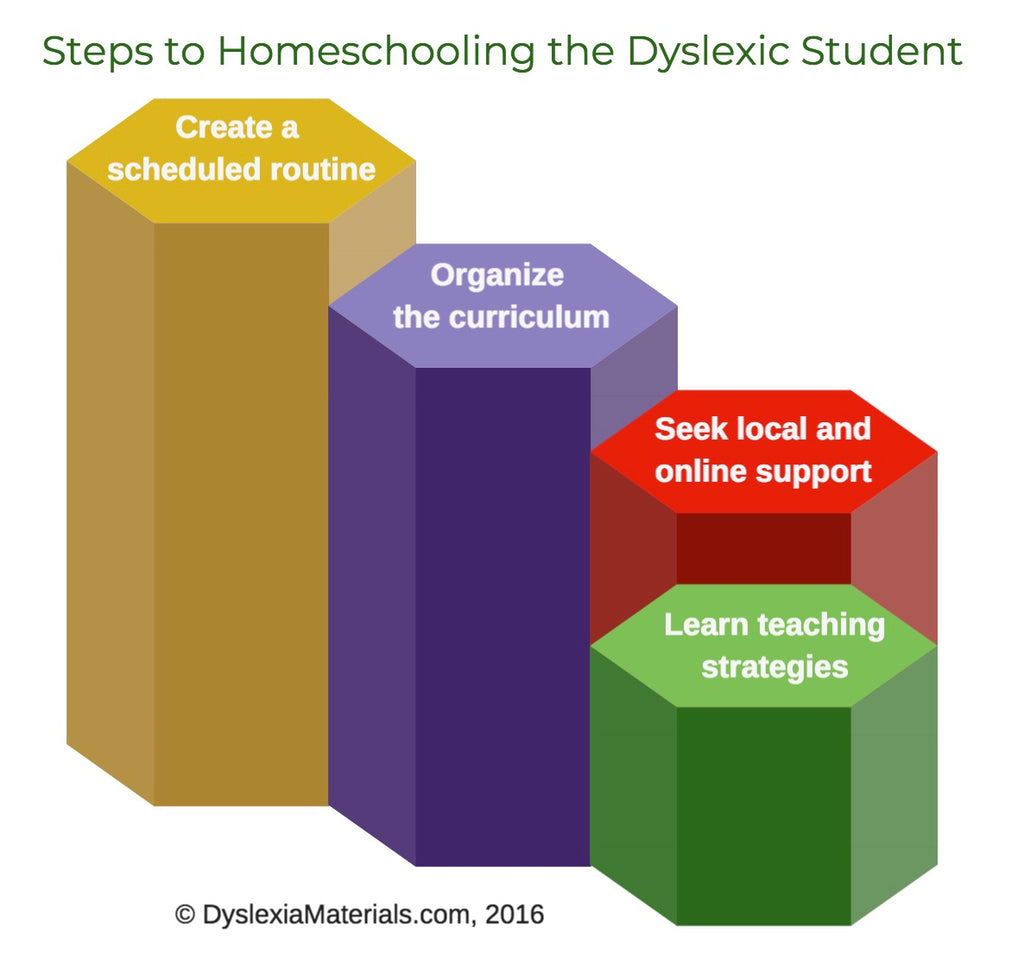Homeschooling with Dyslexia - Pros & Cons For Your Child

“You will always know more about your child than the experts.”
—Carol Anne Swett
The Steps to Homeschooling Students with Dyslexia

According to the National Center for Education Statistics (NCES), homeschooling is growing dramatically in the United States. The number of homeschoolers has exploded from 850,000 in 1999 to over 1.65 million in 2018. In a little over fifteen years, the number of U.S. homeschooled students has doubled. But, despite the impressive growth, homeschoolers still represent only 3.4% of all U.S. students.
The homeschool environment can offer advantages over the traditional classroom for the dyslexic child, but not in all cases. Parents should carefully consider if they have the skill, resources, and patience necessary to support a struggling reader.
The Steps to Teaching the Dyslexic Student at Home
There are a number of steps to consider when deciding and preparing to take on the responsibility to homeschool your child.
-
Learn Teaching Strategies: Certain approaches to teaching are more effective for dyslexic students.
-
Seek Local and Online Support: Try to find other homeschoolers and local organizations that support children with dyslexia and seek their guidance.
-
Organize your Curriculum and Gather the Needed Materials: Assemble fun and multisensory educational materials to meet the learning needs of your child. Some learners will require cognitive remedial tools.
-
Create a Scheduled, Daily Routine: Plan and maintain a consistent, scheduled daily routine to help you and your child reach academic goals. There are many homeschooling planners available on the internet. One of our favorite places to find these resources is on Teachers Pay Teachers.
The Many Roles Required of the Homeschooling Parent:
Remember that as a homeschooling parent, you are assuming not only the role of the teacher but also the role of evaluator, remediator, and community networker. Below, we explore these many hats:
Evaluator Role: When you suspect your child has a reading disability, a helpful first step is an assessment of their abilities to identify strengths and weaknesses. Some informal evaluations can be done at home, but outside professionals will also play a role. Below are some evaluation steps to follow if your child is not formally diagnosed with a Specific Learning Disorder that specifies dyslexia.
- Have your child’s vision and hearing tested. While not likely the primary cause of your child’s dyslexia, these issues have to be ruled out as potential problems.
- Complete a short dyslexia screening survey (see Affordable Dyslexia Remedial Assessment)
- If problems persist and dyslexia is suspected, have a formal psycho-educational assessment conducted by a qualified psychologist.
If done privately, a formal assessment is costly. Investigate any funding support you may be eligible to receive (inquire with your school district) before making an appointment.
The formal assessment should detail both cognitive strengths and weaknesses, and recommend specific interventions, including assistive technology and specialist support (e.g., educational therapist) if necessary. This assessment should provide the essential information for the development of an effective personalized learning program.
As a homeschooling parent, you will have three major roles:
- Patience and Kindness: Patience and kindness are crucial when dealing with students with dyslexia.
- Materials: You must be mindful to select fun and multisensory subject-based materials for your child.
- Structured Method: Just as with materials, you must carefully consider your teaching method. It should be structured, research-based, explicit, and fun.
- Subject Specific Support: For subject areas beyond your knowledge, employ tutors, e-tutors, online educational programs, or even subject-specific YouTube videos.
- Use a special reading instruction program (see Section 6.1 for suggestions).
- Train in the delivery of cognitive remedial tools (See Chapter 5 for suggestions).
- Work with an educational therapist when you have questions or concerns.
- Provide assistive technology devices and applications to help your child accommodate deficit areas (see the Assistive Technology page).
3) Networker Role:
Teaching a student with dyslexia on your own can be very rewarding, but at times it may prove to be a frustrating and lonely prospect. Luckily, there are now more advocacy groups and community support for dyslexics than ever before. Here are a few:
If you are searching for help and advice for a student with dyslexia. Feel free to reach out to Dr. Warren. Be sure to add lots of details about strengths and weaknesses so she can provide specific guidance. You can reach her at erica@goodsensorylearning.com


